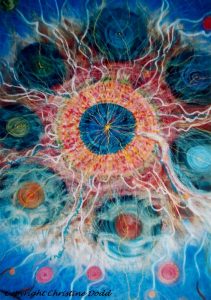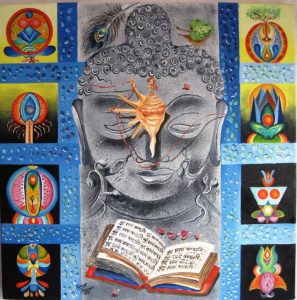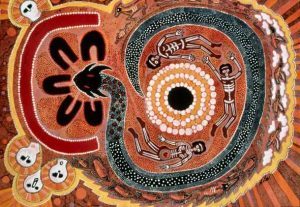 We had the final meeting of our Introduction to Meditation and Mindfulness series at Yoga Bliss today. The course content is adapted from the wonderful work of Insight Meditation teacher, Gil Fronsdal.
We had the final meeting of our Introduction to Meditation and Mindfulness series at Yoga Bliss today. The course content is adapted from the wonderful work of Insight Meditation teacher, Gil Fronsdal.
Last week we focused on mindfulness of emotion. We use the breath to stabilize our attention and then we focused the lens of attention on the compelling emotions, feeling freely in sustained awareness. This week we bring in mindfulness of thought.
Welcome Everything
We try to develop mindfulness to be all inclusive, to include all aspects of our life. To include breath, body, emotions, thoughts, the world we encounter – sights, sounds, smells, everything. Nothing is outside of awareness. That is what makes it sacred. The term “Big Mind” is sometimes used to describe the mind that holds everything. That doesn’t mean that we don’t act with discernment in the world. We keep our awareness and our hearts open, even though we might say no to something.
 We keep our hearts and minds open through the strengthening of mindfulness. As mindfulness gets stronger and stronger, our attention is set free from what we are mindful of. When we have strong sensation or pain in the body – we often react to it, we tense around it or try to push it away. We may have feelings of anger, despair or self-pity. All these strong reactions can become entangled with what we are attending to. As mindfulness gets stronger, mindfulness itself begins to disentangle itself; it becomes independent. An analogy often used is that of a lotus flower. A lotus flower grows up out of the muddy water, but as it blooms it’s untouched by the mud. A beautiful white lotus is rooted in the mud, but it’s not touched by the mud. It has this purity. As the mindfulness gets stronger it’s becoming free from the mud, the places of attachment or aversion. In mindfulness meditation, we aim to be aware of thoughts. To include them in awareness, and in that inclusion, with time, learn to be free of them. Sometimes the mind does become silent.
We keep our hearts and minds open through the strengthening of mindfulness. As mindfulness gets stronger and stronger, our attention is set free from what we are mindful of. When we have strong sensation or pain in the body – we often react to it, we tense around it or try to push it away. We may have feelings of anger, despair or self-pity. All these strong reactions can become entangled with what we are attending to. As mindfulness gets stronger, mindfulness itself begins to disentangle itself; it becomes independent. An analogy often used is that of a lotus flower. A lotus flower grows up out of the muddy water, but as it blooms it’s untouched by the mud. A beautiful white lotus is rooted in the mud, but it’s not touched by the mud. It has this purity. As the mindfulness gets stronger it’s becoming free from the mud, the places of attachment or aversion. In mindfulness meditation, we aim to be aware of thoughts. To include them in awareness, and in that inclusion, with time, learn to be free of them. Sometimes the mind does become silent.




